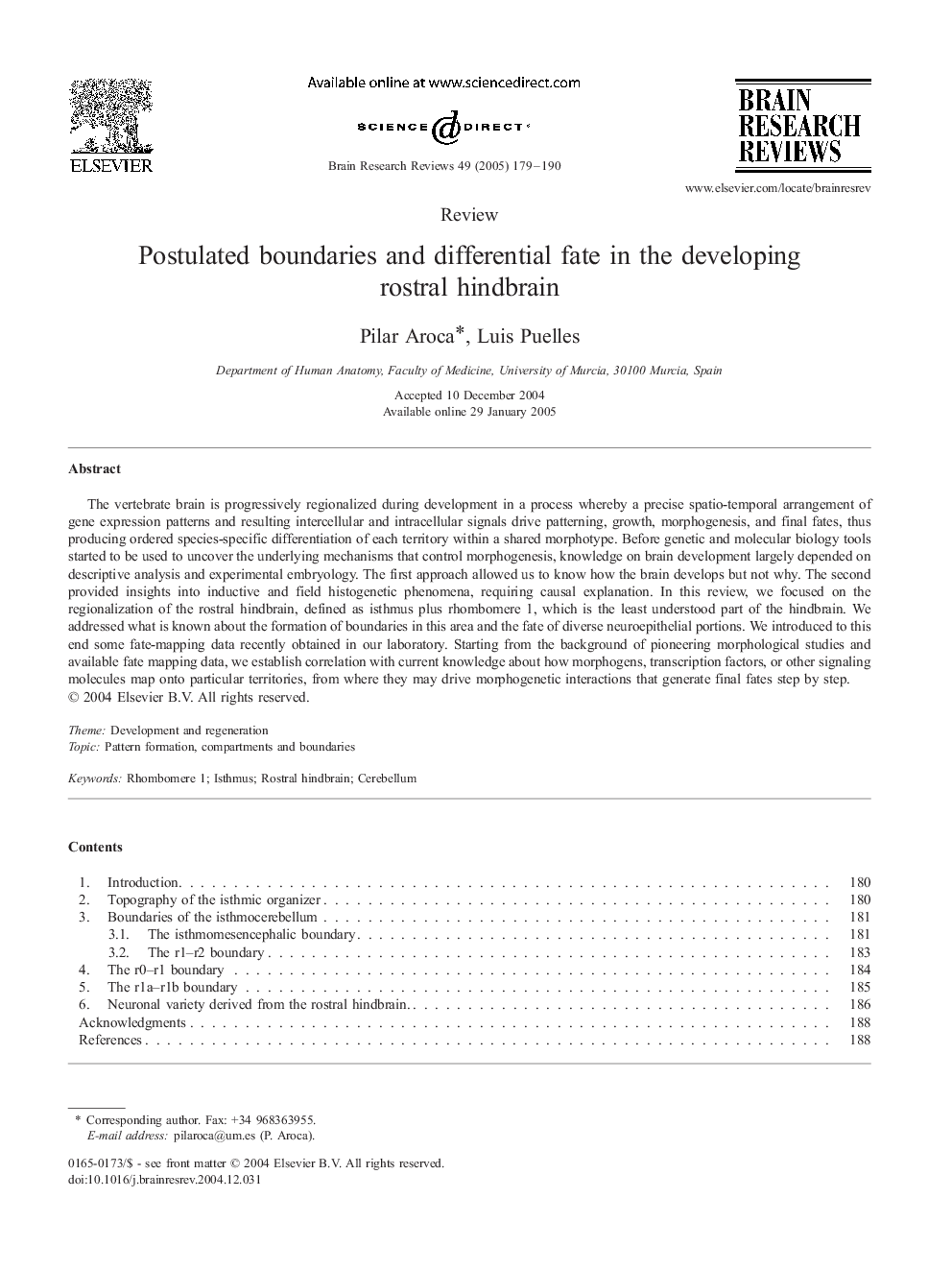| Article ID | Journal | Published Year | Pages | File Type |
|---|---|---|---|---|
| 9423075 | Brain Research Reviews | 2005 | 12 Pages |
Abstract
The vertebrate brain is progressively regionalized during development in a process whereby a precise spatio-temporal arrangement of gene expression patterns and resulting intercellular and intracellular signals drive patterning, growth, morphogenesis, and final fates, thus producing ordered species-specific differentiation of each territory within a shared morphotype. Before genetic and molecular biology tools started to be used to uncover the underlying mechanisms that control morphogenesis, knowledge on brain development largely depended on descriptive analysis and experimental embryology. The first approach allowed us to know how the brain develops but not why. The second provided insights into inductive and field histogenetic phenomena, requiring causal explanation. In this review, we focused on the regionalization of the rostral hindbrain, defined as isthmus plus rhombomere 1, which is the least understood part of the hindbrain. We addressed what is known about the formation of boundaries in this area and the fate of diverse neuroepithelial portions. We introduced to this end some fate-mapping data recently obtained in our laboratory. Starting from the background of pioneering morphological studies and available fate mapping data, we establish correlation with current knowledge about how morphogens, transcription factors, or other signaling molecules map onto particular territories, from where they may drive morphogenetic interactions that generate final fates step by step.
Keywords
Related Topics
Life Sciences
Neuroscience
Neuroscience (General)
Authors
Pilar Aroca, Luis Puelles,
